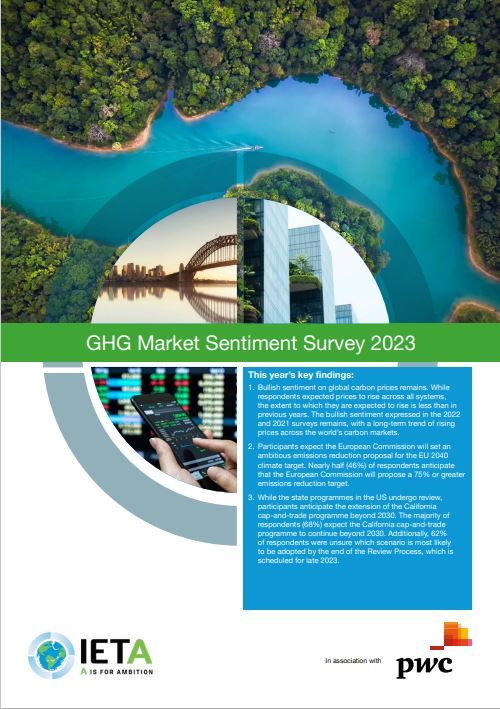2023 Survey
Download report
The last three years have seen the world grapple with a global pandemic and then the onset of geopolitical turmoil and war, yet carbon markets have not been diverted from their determination to produce the low-carbon future that we need.
Prices for EU Allowances topped the psychologically important €100 barrier for the first time in February as the regulatory process entered its final stages.
In China there is still debate over when and how far to extend the nationwide ETS and when to impose an absolute limit on emissions, and in Australia, it remains a strong constituency calling for an explicit price on carbon despite recent advances.
In Africa, Southeast Asia and Latin America our respondents had a wide variety of views on when compliance markets would begin to emerge, underlining the challenge that governments have in meeting domestic targets while waiting for clarity to emerge on the international policy front.
The voluntary market too has navigated some fairly choppy waters in the past few months, yet anecdotal evidence continues to demonstrate how many more private sector entities are pledging to take action to address their internal greenhouse gas emissions, and how innovation and investment are still being brought to bear.
Our survey respondents expressed strong confidence that the voluntary market has the capacity to scale up to meet the potential additional demand over the rest of this decade, and while some benchmark prices for carbon offsets are expected to end 2023 weaker than where they started it, there is still underlying optimism.
While the last two years have been characterised by optimism and resolve, it’s clear now that the market is developing the resilience it needs to get through the process of building international frameworks, supporting more countries as they work to implement their own mechanisms.